#marlborough theatre
Explore tagged Tumblr posts
Text
Excerpts from the article:
The Watermill Theatre is looking for a sponsor or donor to help celebrate the environmental message at the core of its summer musical, a new production of The Lord of the Rings. This partnership offers a unique opportunity to partner with the theatre to reach thousands of people with a positive message about taking action to address the climate emergency.
The theatre plans to give audience members wildflower seeds to take home and create their own little corner of Middle-earth. Designed to highlight the importance of caring for our environment and protecting nature and wildlife for future generations, the seed packets will be handed to audiences as they leave the show. In order to realise this element of the experience, The Watermill is seeking a partner to fund or donate approximately 5,000 wildflower seed packets for The Lord of The Rings which runs for 12 weeks from 25 July.
23 notes
·
View notes
Text
Rhys Darby dropped us a line the other day….want to WIN A DOUBLE PASS to his gig?? HE's COMING HERE IN JULY with Mystic Time Bird 🙂 LIKE this post, SHARE this post, TAG your funniest mate and let us know your favourite Rhys Darby moment! Offer closes Tuesday 18th @ 12pm - don't miss out!
Source: ASB Theatre Marlborough on Facebook (14 April 2017)
59 notes
·
View notes
Text
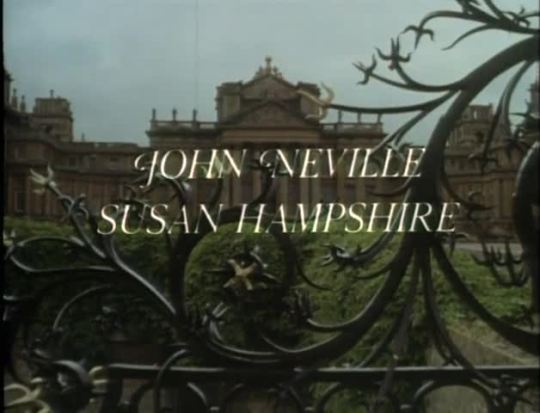

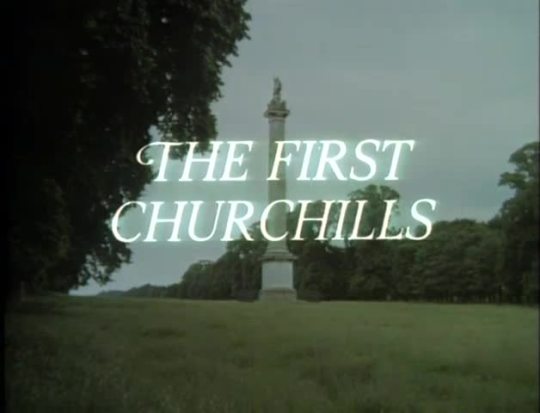
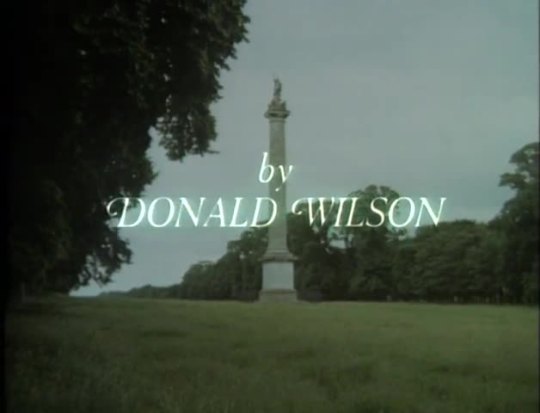










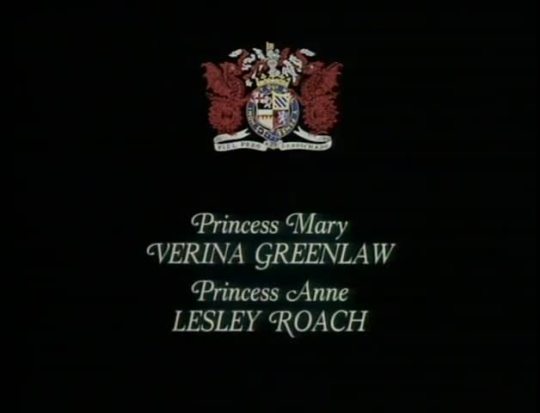

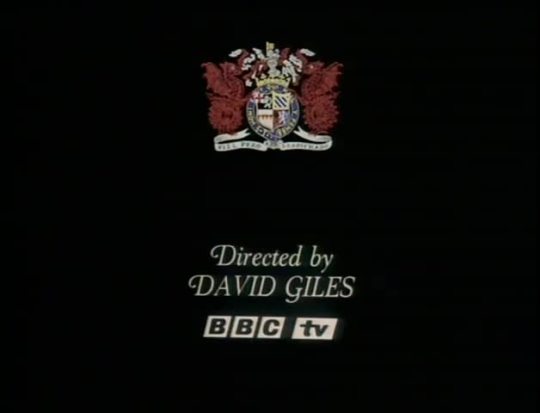
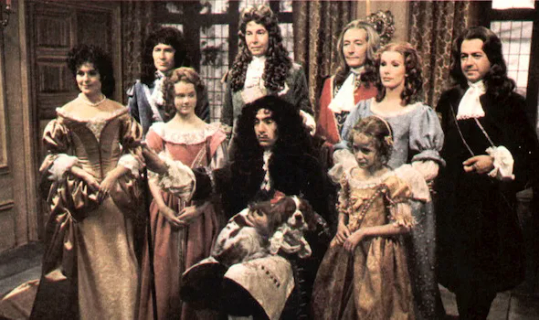
The First Churchills - BBC Two - Septembr 27, 1969 - December 13, 1969
Period Drama (12 Episodes)
Running Time: 60 minutes
Stars:
Susan Hampshire as Sarah Jennings Churchill, Duchess of Marlborough
John Neville as John Churchill, 1st Duke of Marlborough
James Villiers as King Charles II
John Westbrook as King James II
Sheila Gish as Queen Mary, wife to James II
Alan Rowe as King William III
Lisa Daniely as Queen Mary II
Margaret Tyzack as Queen Anne
Roger Mutton as Prince George of Denmark
Robert Robinson as King Louis XIV
John Standing as Sidney Godolphin
Frederick Peisley as Lord Shaftesbury
Job Stewart as Lord Shrewsbury
James Kerry as James, Duke of Monmouth
Richard Pearson as Robert Harley
Moira Redmond as Barbara, Duchess of Cleveland
Richard Warwick as Francis Godolphin
Polly Adams as Henrietta Churchill
Graham Armitage as John Wilmot, Earl of Rochester
Colin Bean as Lord Russell
Consuela Chapman as Duchess of Portsmouth
Michael Culver as Charles Churchill
Andria Lawrence as Nell Gwyn
Michael Lynch as D'Artagnan:
Kay Patrick as Henrietta Wentworth
Arthur Pentelow as Marquess of Carmarthen
Bruce Purchase as Duke of Buckingham
John Ringham as Laurence Hyde, 1st Earl of Rochester
Nicholas Smith as Titus Oates
Michael Attwell as Henry St John
Jill Balcon as Abigail Masham
Freddie Wilson as James Stuart, the Old Pretender
Yvonne Antrobus as Anne Churchill
Robert Mill as Charles Spencer, 3rd Earl of Sunderland
William Job as Adam de Cardonnel
Bernard Taylor as William Cadogan
Francis Wallis as John Churchill, Marquess of Blandford
The First Churchills was the first series telecast by PBS under the title of Masterpiece Theatre from January 10, 1971 - March 28, 1971
#The First Churchills#TV#BBC Two#PBS#Period Drama#1970's#Susan Hampshire#John Neville#James Villiers#John Standing
8 notes
·
View notes
Text
Anthony Thorley
Anthony Thorley has been researching landscape energies, myths and traditions for over thirty years. In 2006, Anthony graduated with an MA in Cultural Astronomy and Astrology at Bath Spa University and in summer 2008 he commenced a PhD at the University of Kent on the conceptual basis of landscape zodiacs as sacred space. Thorley is particularly interested in the idea that landscape ‘speaks’ to those who live close to the land and that sacred landscape is the product of a complex co-creative dialogue in which man is only a single participant in a crowded theatre of animate activity which often seems to create more mystery than meaning. Thorley argues that crop circles are a way for the land itself to express its inherent "deep wisdom", but that this expression requires human consciousness and a sense of responsibility to engage in a "creative dialogue" with the land. He views crop circles as the physical manifestation of this dialogue between the land and human beings. British ancestors had chosen pilgrimage and ritual journey as a way of exploring and honouring the fundamental healing and transformational process present in the human connection to the land and sky and their changing energies through the seasons. Thorley considers that a focussed journey in the sacred landscape can facilitate personal growth and fundamental transformation if we accept not only that seeing is believing but that believing is seeing. He hopes to raise awareness in a wider ecological and spiritual context about the importance and significance of placing sacred landscape in the centre of effective environmental policy.
Anthony Thorley: Crop Circles & the Spirit of Place - A new look at old ideas (Circles of Knowledge Conference, Marlborough, Wiltshire, UK, 2012)
youtube
Sunday, April 28, 2024
6 notes
·
View notes
Text
New plans for Sydney's Pride Squares
New Post has been published on https://qnews.com.au/new-plans-for-sydneys-pride-squares/
New plans for Sydney's Pride Squares

There are major plans proposed for Darlinghurst’s Taylor Square, while the sale of Newtown’s The Hub Theatre could make the Inner West’s Pride Square even queerer.
The redevelopment of the T2 building on Taylor Square will finally move forward after the City of Sydney approved plans by site owner Archon Property to add three new stories and a rooftop garden to the heritage listed building.
Archon Property bought the building in 2018 for $6.9 million in 2018 after a council plan to turn the building into a hub for cyclists fell through.
However an earlier design for the redevelopment was knocked back by council after complaints from residents and a design considered unsympathetic to the heritage of the existing building.
The new plans include a restaurant and cafe on the ground floor, and a live music venue in the basement, while the upper floors of the building will become office space.
The news comes as councillors have unanimously voted to support a proposal by Team Clover’s Councillor Adam Worling that would see additional Pride Flags installed around Taylor Square and flown all year round.
There are currently 18 smart banner poles on the north side of Taylor Square flying Progressive Pride banners.
Under the longterm plan, “Pride Flags of Importance” recognising different groups from within the LGBTQIA+ community would be displayed on poles outside the Darlinghurst Courthouse with QR codes or plaques for educational purposes.
In the short term, council will explore the feasibility of dedicating the remaining 18 smart banner poles on the south side of Taylor Square to Progressive Pride banners.
“I want to create an avenue of pride flags that wholly captures the diversity and full spectrum of our community,” Worling told QNews following the success of his motion.
��We’ve come a long way since the rainbow flag of ’78, with each expression of sexuality now having its own unique flag. I think installing them as a welcome at Taylor Square would be a very powerful (and colourful!) education for visitors.”
Worling’s motion also reiterates the City of Sydney’s advocacy for the removal of fences outside Darlinghurst Courthouse so that the grassed area in front of the court can be reclaimed as part of an expanded Taylor Square.
Meanwhile the newly opened Inner West Pride Centre is set to be joined by an additional queer space after The Hub Theatre, located two doors down in Newtown’s Pride Square, has a new owner for the first time in 58 years.
The theatre and a nearby house were sold for $25 million by longtime owners the Vlattas family, who had previously spent half a million dollars renovating the building in 2014.
It had reportedly been costing the family $100,000 a year since then while it remained empty apart from an occasional theatre show or pop-up sale.
“It’s definitely staying as a theatre and it won’t be knocked down, which is what we feared,” Dimitri Vlattas told Realcommercial following the sale in November.
“We didn’t have it on the market, we’d just put it up for rental, but the buyers approached us and they said they wanted to purchase it, so everything’s got a price I guess.”
The building was bought by a Barbara Doreen White, and sources told Realcommercial that she wanted the space so that her daughter can create a new “queer performance space” in the Inner West.
The sale of The Hub is believed to be the biggest property transaction in Newtown since the Marlborough Hotel changed hands in 2017 for $24.5 million.
0 notes
Text
[James] Mason [actor of the main villain] was educated at Marlborough College and took a first in architecture at Peterhouse, Cambridge, where he became involved in stock theatre companies in his spare time. He had no formal training in acting and initially embarked upon it for fun.
Probably not closely related but interesting
I can’t think of a lot of other films as fixated on the architecture of the setting as much as north by northwest without actually being about the architecture. This attention increases throughout the course of the film: first the title sequence (which is obviously attention grabbing but not actually textually significant), then the bar where Cary grant meets his friends (where it is striking but not much lingered on, then the Townsend mansion (where it starts drawing more attention to the building), then the UN general assembly (where the cinematography starts treating it very indulgently), then vandamms house (where the details of the building layout become small-level plot significant, with some parkour), and finally the climax (which is just bouldering/parkour)
Which is all sort of interesting bc in giving a rough sketch of the plot and themes you are not tempted to to bring up the architecture at all. Wonder what’s up with that
19 notes
·
View notes
Text
THE GANG’S ALL HERE
1931
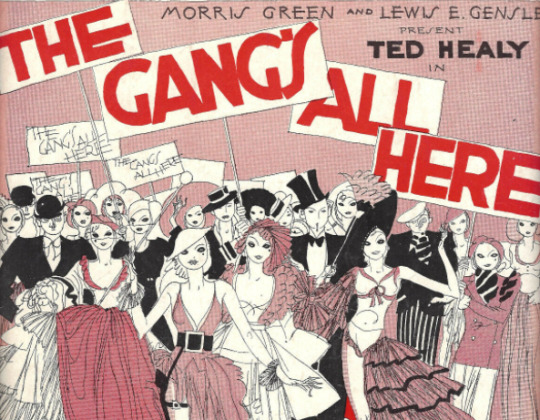
The Gang’s All Here is a 1931 musical comedy with music by Louis E. Gensler, book by Russel Crouse, Oscar Hammerstein II, and Morrie Ryskind, with lyrics by Owen Murphy and Robert A. Simon. It was directed by Frank McCoy and staged by Oscar Hammerstein II.
The plot concerned a war between bootleggers in 1931 Atlantic City NJ, with the second act set mainly in Nantucket RI.
Note: The musical is not related to the popular song “Hail! Hail! The Gang’s All Here” nor the 1943 film starring Carmen Miranda and Alice Faye.
The musical had its out-of-town tryout in Philadelphia, where they realized it was in trouble and called in Oscar Hammerstein as play doctor. Although Hammerstein had no hopes for The Gang’s All Here, he couldn’t say no to his colleagues and agreed to go to Philadelphia to see what he could do to improve the musical.

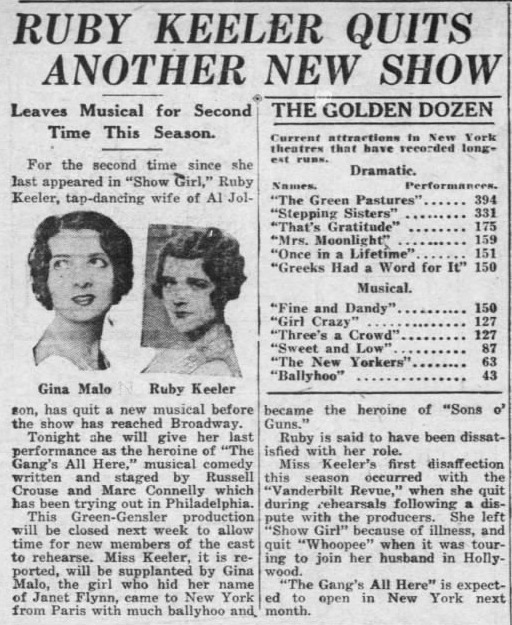
After the Philadelphia tryout at the Shubert, Ruby Keeler (possibly sensing she was in a turkey) departed the cast and was replaced with Gina Malo. Keeler went to Hollywood where she thrived.

After Philadelphia, the show made a short stop at the Shubert in Newark, New Jersey (above) before heading to Broadway’s Imperial Theatre, opening February 18, 1931 and lasting just 23 performances.
One of the unique song titles was “By Special Permission of the Copyright Owner, I Love You”.
Every time a radio is playing, they're saying "And next you will hear us play Something with the publisher's okay" Listening to this great announcer trilling This thrilling new text, told me what to do Try this very notion out on you... I asked your Father, he said "Okay!" I asked your Mother, she said "Hooray!" By special permission of the copyright owner I love you!
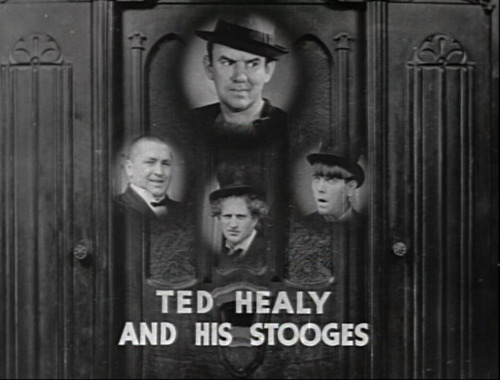
Vaudeville sensation Ted Healy headlined. He is largely remember as the man responsible for “The Three Stooges”. Just prior to this musical, Healy and the original stooges parted ways over a dispute, and Healy replaced them with three other ‘stooges’, who also appeared with him in his next musical, Billy Rose’s Crazy Quilt (May 1931).

The reviews were mostly negative. Brooks Atkinson said that “seldom has a lavish musical struggled so clumsily to reconcile a satiric book with the antics of clowns. Despite feverish re-working, the show was a hurly-burly of disjoined scenes.” Dorothy Parker said that the show was “fantastically confused and preposterously elongated” and “dragged on beyond midnight.”
George Jean Nathan said the musical needed “a carload of blue pencils” and Arthur Ruhl said that it was “excessively long-winded, labored and dull.”
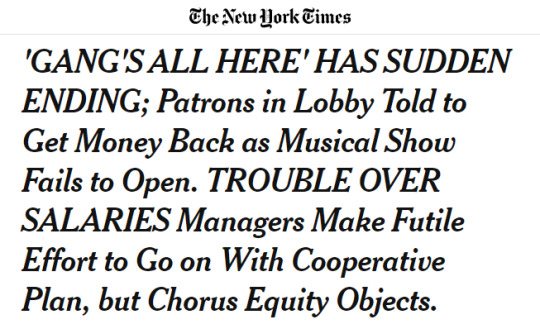
The show ended abruptly, with patrons arriving to be told the show had prematurely ended its run.
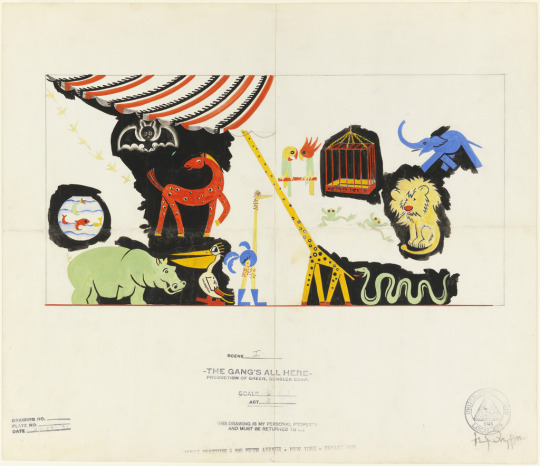
Set drawing for the first scene of Act One of The Gang’s All Here. It was designed by Henry Dreyfuss. It is unclear how this ties into the scene description in the program of “On the Boardwalk at Atlantic City”. But the drawing is dated February 14, 1931, just four days before the show’s Broadway opening, and well past the preview period. In addition to re-writes, it is likely that scenic changes were also made.
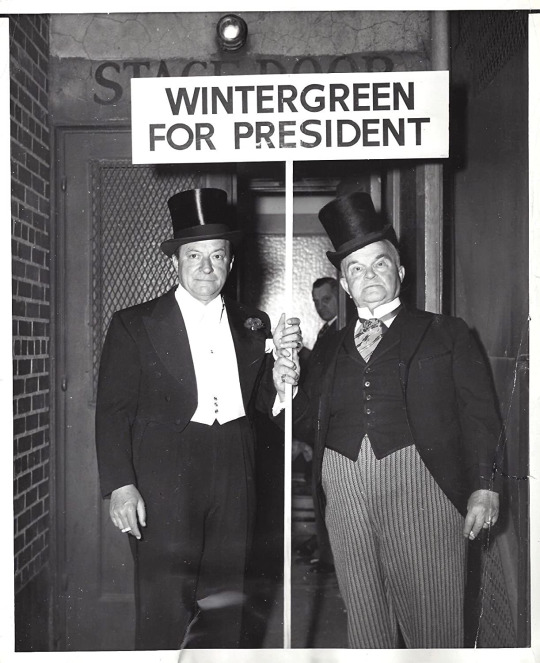
If anything good came from the musical, it seems that one of the character names - Winterbottom - was recycled into the Pulitzer Prize-winning musical Of Thee I Sing (coincidentally also set in Atlantic City) which opened just a few months later. In it, there the President was named Wintergreen and the Vice President Throttlebottom. The common thread was book writer Morrie Ryskind created both shows.
ATLANTIC CITY
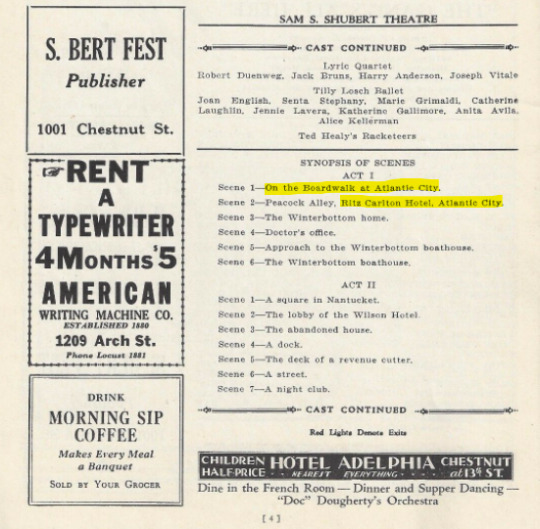

In 1931, the Ritz Carlton Hotel in Atlantic City was marking its first decade, and was already known for it’s superior service and accommodation. In 1921, another musical was set at the Ritz titled Ritz Carlton Nights. That one, however, unlike The Gang’s All Here, actually originated in Atlantic City.
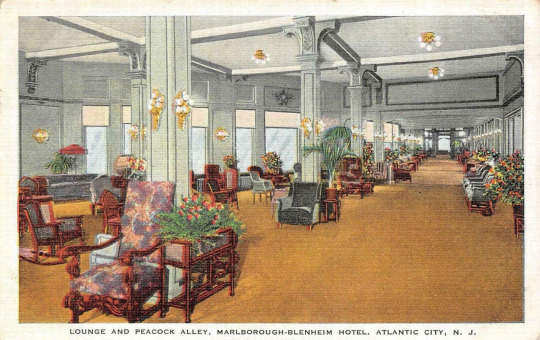
Peacock Alley was not located at the Ritz, but at the Marlborough-Blenheim Hotel. It was so named because it was the connecting hallway between the conjoined Marlborough and Blenheim hotels, and allowed guests to “peacock” (strut in their finery) for the perusal of other guests.

Interestingly, when the HBO series “Boardwalk Empire” (which also concerned bootleggers during prohibition), showed the Ritz, it was actually modeled on the Marlborough-Blenheim’s more exotic exterior, not the actual Ritz’s boxy frame.

The Boardwalk in 1931. In 1930′s Atlantic City, it could be truly said that “the gang’s all here.”
#Atlantic City#New Jersey#The Gang's All Here#Broadway#Musical#Phildelphia#Newark#1931#Imperial Theatre#New York City#Boardwalk#Ritz-Carlton Hotel#Marlborough-Bleinheim Hotel#Peacock Alley#Nantucket#Of Thee I Sing#Morrie Ryskind#Oscar Hammerstein II#Boardwalk Empire
13 notes
·
View notes
Photo
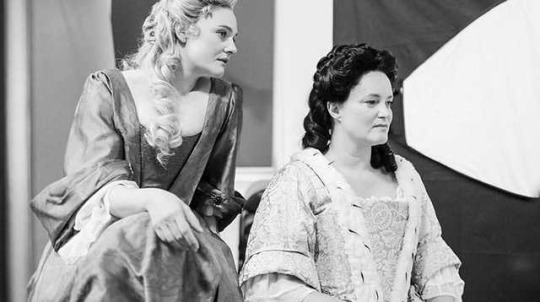


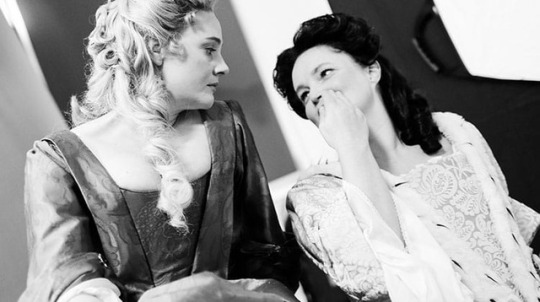
Emma Cunniffe as Queen Anne and Romola Garai as Sarah Churchill in the play Queen Anne by Helen Edmundson, on now in London.
#emma cunniffe#romola garai#queen anne#queen anne of england#sarah churchill#duchess of marlborough#play#theatre#london#history#helen edmundson#rsc#royal shakespeare company#18th century
91 notes
·
View notes
Note
But in this context we were talking about tabloids - and the tabloids absolutely discussed Harry in the frame of a middle-class entertainment Luvvvy, and Louis in a northern working-class frame.//
With respect, and remembering you only started following 1d in 2015, Jay and Louis were the epitome of middle class theatre mum and son. She drove him and the twins round the country for auditions and he got two non speaking parts in TV shows. Between 2010-12 they were covered like that in the tabloids. Eleanor with her Marlborough education and Man Uni degree is also middle class.
Harry up to 2014 was covered as the 1d womaniser, tomcatting round London fucking models while Louis stayed nicely at home with his long term girlfriend.
I really disagree with your characterisation of Jay and the dynamic (and the wider class analysis is pretty ungrounded - it's not only middle-class parents who drive their kids places). Jay worked as a supervisor for child actors while the twins were little, and then went back to (I think - she'd certainly done some training before they were born) working as a midwife. I think people who focus on the entertainment part of that are missing a really key point - childcare for twins is fucking expensive. Looking after children in this context was better paid than other jobs that she could bring the twins along to. Doing childcare, even on a film set, is not a middle-class job. As far as I know, Louis got work as an extra in those shows because he was there. I find it really frustrating that the entire material context has been stripped out of what Jay was doing. And even more frustrating to hear people suggest that the fact that Jay doing childcare work while her twins were babies somehow defines her as not working-class.
(And I think there are things you can say that complicate her class position - I certainly think she was pretty determined to do everything she could to build stability for herself and her children. But to focus on the time she was doing childcare while her children were small? Just bizzarre)
********
Harry being portrayed as someone who had sex with a lot of people in no way contradicts him being portrayed as a middle-class entertainment luvvy. If you want to send me some material of Louis and Jay being covered as middle class theatre family in the tabloids, I'd be interested. But nothing about this anon makes me trust your analysis.
#I do think that early on in 1D#there was quite a lot of effort#from their team#to ensure that Louis and Zayn weren't understood as part of the unruly rioting working-class of the time#and strip them of any signifiers that would remind people of that#which had an interesting impact on Louis' image
2 notes
·
View notes
Photo
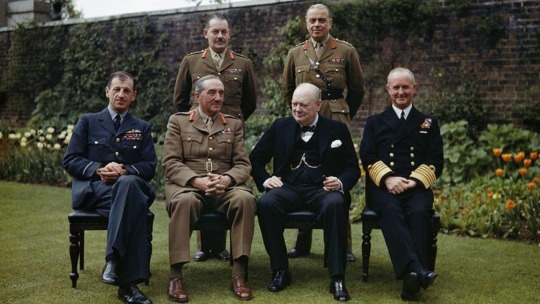
It is always dangerous for soldiers, sailors, or airmen to play at politics. They enter a sphere in which the values are quite different from those to which they have hitherto been accustomed.
- Winston Churchill, The Gathering Storm
**Pictured above: Seated, left to right: Air Chief Marshal Sir Charles Portal; Field Marshal Sir Alan Brooke, the Rt Hon Winston Churchill; Admiral Sir Andrew Cunningham. Standing, left to right: the Secretary to the Chiefs of Staffs Committee, Major General L C Hollis; and the Chief of Staff to the Minister of Defence, General Sir Hastings Ismay.
No one serious has ever doubted the statesmanship of Winston Churchill. However a broad criticism of Churchill as warlord only came to light after the war. Many historians thought that he meddled, incurably and unforgivably, in the professional affairs of his military advisers.
The first surge of criticism came primarily from military authors, in particular Churchill’s own chairman of the Chiefs of Staff, and Chief of the Imperial General Staff, Alan Brooke. The publication of his diaries in the late 1950s shocked readers, who discovered in entries Brooke himself retrospectively described as “liverish” that all had not gone smoothly between Churchill and his generals.
On 10 September 1944 he wrote in his diary (an entry not known until the 2001 updated version was published:
“[Churchill] has only got half the picture in his mind, talks absurdities and makes my blood boil to listen to his nonsense. I find it hard to remain civil. And the wonderful thing is that 3/4 of the population of this world imagine that Winston Churchill is one of the Strategists of History, a second Marlborough, and the other 1/4 have no conception what a public menace he is and has been throughout the war! It is far better that the world should never know and never suspect the feet of clay on that otherwise superhuman being. Without him England was lost for a certainty, with him England has been on the verge of disaster time and again….Never have I admired and disliked a man simultaneously to the same extent.”
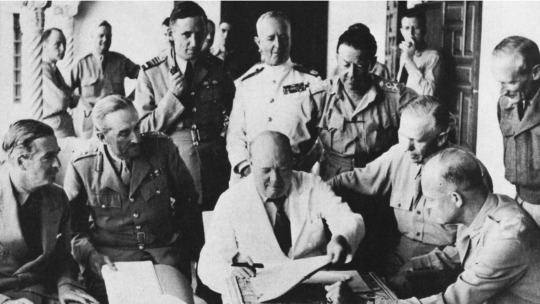
Many of the British field marshals and admirals of World War II came away nursing the bruises that inevitably came their way in dealing with Churchill. They deplored his excessive interest in what struck them as properly military detail; they feared his imagination and its restless probing for new courses of action. But perhaps they resented most of all his certainty of their fallibility.
Norman Brook, secretary of the Cabinet under Churchill, wrote to Hastings Ismay, the former secretary to the Chiefs of Staff, a revealing observation: “Churchill has said to me, in private conversation, that this was partly due to the extent to which the Generals had been discredited in the First War—which meant that, in the Second War, their successors could not pretend to be professionally infallible.”
Churchill’s uneasy relationship with his generals stemmed, in large part, from his willingness to pick commanders who disagreed with him—and who often did so violently. The two most forceful members of the Chiefs of Staff, Brooke and Cunningham, were evidence of that. If he dispensed with Field Marshal Sir John Greer Dill as Chief of Imperial General Staff, he did so with the silent approval of key officers, who shared his judgment that Dill did not have the spirit to fight the war through to victory.
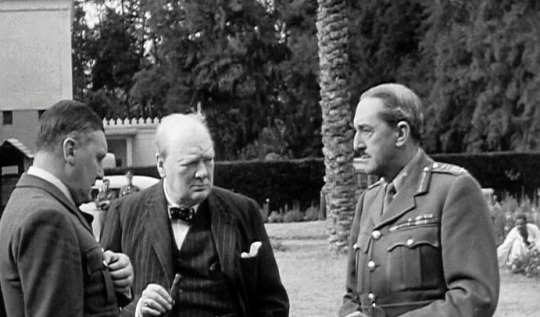
As General Hastings Lionel "Pug" Ismay (later 1st Baron Ismay), Churchill’s chief military asdvisor and link to the CIG, and others privately admitted, however, Dill was a spent man by 1941, hardly up to the demanding chore of coping with Churchill. “The one thing that was necessary and indeed that Winston preferred, was someone to stand up to him, instead of which Jack Dill merely looked, and was, bitterly hurt.”If Churchill were to make a rude remark about the courage of the British Army, Ismay later recalled, the wise course was to laugh it off or to refer Churchill to his own writings. “Dill, on the other hand, was cut to the quick that anyone should insult his beloved Army and vowed he would never serve with him again, which of course was silly.”
It was not enough, of course, to pick good leaders; as a war leader, Churchill found himself compelled to prod them as well—an activity that occasioned more than a little resentment on their part. Indeed, in a private letter to General Claude Auchinleck shortly before he assumed command in the Middle East in June 1941, Dill warned of this, saying that “the Commander will always be subject to great and often undue pressure from his Government.”
The permeation of all war, even total war, by political concerns, should come as no surprise to the contemporary student of military history, who has usually been fed on a diet of Clausewitz and his disciples. But it is sometimes forgotten just how deep and pervasive political considerations in war are.
Take, for example, the question of the employment of air power in advance of the Normandy invasion.

As is well known, operational experts and commanders split over the most effective use of air power. Some favored the employment of tactical air power to sever the rail and road lines leading to the area of the proposed beachhead, while others proposed a systematic attack on the French rail network, leading to its ultimate collapse. This seemingly technical military issue had, however, political ramifications, because any attack (but particularly one targeted against French marshalling yards) promised to yield French civilian casualties. Churchill therefore intervened in the bombing dilute to secure a promise that French civilian casualties would be held to a bare minimum. “You are piling up an awful load of hatred,” Churchill wrote to Air Chief Marshal Tedder. He insisted that French civilian casualties be under 10,000 killed, and reports were submitted throughout May that listed the number of French civilians killed and (callously enough) “Credit Balance Remaining.”

This is not to say that Churchill’s military judgment was invariably or even frequently superior to that of his subordinates, although on occasion it clearly was. Rather, Churchill exercised one of his most important functions as war leader by holding their calculations and assertions up to the standards of a massive common sense, informed by wide reading and experience at war. When his military advisers could not come up with plausible answers to these harassing and inconvenient questions, they usually revised their views; when they could, Churchill revised his. In both cases, British strategy benefited.
In The World Crisis Churchill wrote: “At the summit, true strategy and politics are one.” The civil-military relationship and the formulation of strategy are inextricably intertwined. A study of Churchill’s tenure in high command of Britain during the Second World War suggests that the formulation of strategy is a matter more complex than the laying out of blueprints.
In the world of affairs, as any close observer of government or business knows, conception or vision make up at best a small percentage of what a leader does—the implementation of that vision requires unremitting effort. The debate about the wisdom of Churchill’s judgments (for example, his desire to see large amphibious operations in the East Indies) is largely beside the point. His activity as a strategist emerges in the totality of his efforts to shape Britain’s war policies, and to mold the peace that would follow the war.

The Churchillian model of civil-military relations is one of what one might call an uneven dialogue - an unsparing (if often affectionate) interaction with military subordinates about their activities. It flies in the face of the contemporary conventional wisdom, particularly in the United States, about how politicians should deal with their military advisers.25 In fact, however, Churchill’s pattern of relationships with his Generals resembles that of other great democratic war statesmen, including Lincoln, Clemenceau and Ben Gurion, each of whom drove their generals to distraction by their supposed meddling in military matters.
All four of these statesmen, Clausewitzians by instinct if not by education, recognized the indissolubility of political and military affairs, and refused to recognize any bounds to their authority in military activities. In the end, all four provided exceptional leadership in war not because their judgment was always superior to that of their military subordinates, but because they wove the many threads of operations and politics into a whole. And none of these leaders regarded any sphere of military policy as beyond the scope of his legitimate inspection.
The penalties for a failure to understand strategy as an all-encompassing task in war can be severe. The wretched history of the Vietnam War, in which civilian leaders never came to grips with the core of their strategic dilemma, illustrates as much. President Johnson, in particular, left strategy for the South Vietnamese part of the war in the hands of General William Westmoreland, an upright and limited general utterly unsuited for the kind of conflict in which he found himself. He did not find himself called to account for his operational choices, nor did his strategy of attrition receive any serious review for almost three years of bloody fighting. At the same time, the President and his civilian advisers ran an air war in isolation from their military advisers, on the basis of a weekly luncheon meeting from which men in uniform were excluded until halfway through the war.
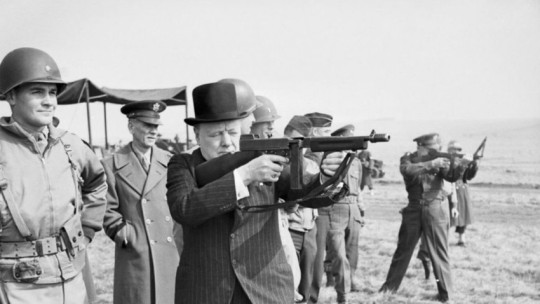
A Churchillian leader fighting the Vietnam War would have had little patience, one suspects, with the smooth but ineffectual Chairman of the Joint Chiefs of Staff, General Earle Wheeler. He would, no doubt, have convened all of his military advisers (and not just one), to badger them constantly about the progress of the war, and about the intelligence with which the theatre commander was pursuing it. The arguments might have been unpleasant, but at least they would have taken place. Perhaps no strategy would have made the war a winnable one, but surely some strategic judgment would have been better than none. Nor can strategy simply be left to the generals, as they so often wish.
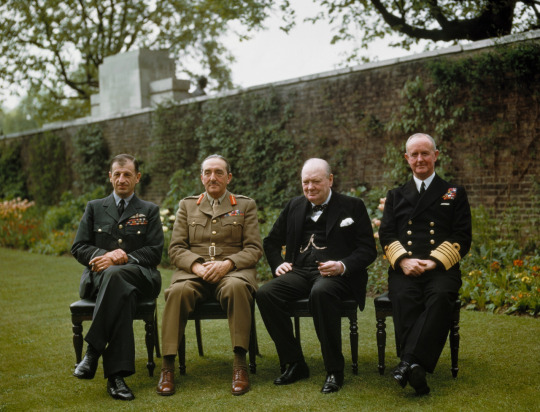
The Churchillian way of high command rests on an uneven dialogue between civilian leader and military chiefs (not, let it be noted, a single generalissimo). It is not comfortable for the military, who suffer the torments of perpetual interrogation; nor easy for the civilians, who must absorb vast quantities of technical, tactical and operational information and make sense of it. But in the end, it is difficult to quarrel with the results.
#churchill#winston churchill#quote#generals#military#leadership#command#world war two#war#strategy#politics#admirals#military high command#civil-military relations#history#britain#army
51 notes
·
View notes
Text
Reviews
The Lord of the Rings: A Musical Tale at the Watermill Theatre
25 July 2023 to 15 October 2023


Ahead of press night at the Chicago Shakespeare Theater tomorrow, let's look back at what critics and audiences had to say about the UK revival of The Lord of the Rings at the Watermill Theatre, which began previews exactly one year ago today:
Newspapers / news outlets
The Guardian (2 August 2023)
The Telegraph (2 August 2023)
The Times (2 August 2023)
WhatsOnStage (2 August 2023)
The Stage (2 August 2023)
Wokingham Today (2 August 2023)
Marlborough News (2 August 2023)
iNews (2 August 2023)
The Week (10 August 2023)
The Reading Chronicle (6 September 2023)
Bloggers / Tolkien websites
Tolkien Collector's Guide (31 July 2023)
The Spy in the Stalls (1 August 2023)
Curtain Call Reviews (1 August 2023)
Theatre & Tonic (2 August 2023)
Things We Enjoy (2 August 2023)
West End Best Friend (3 August 2023)
Musical Theatre Review (3 August 2023)
Beyond the Curtain (6 August 2023)
All That Dazzles (8 August 2023)
TheOneRing.net (10 August 2023)
Sadie takes the Stage (30 August 2023)
Theatre Plays UK (4 October 2023)
Extreme Improv xStreamed (9 October 2023)
Voir Tolkien (20 October 2023)
British Theatre Guide
Vloggers / video reviews
Theatre.Reviews with Paul Seven (3 August 2023)
Ellie Talks Theatre (7 August 2023)
loren hardy (9 August 2023)
MickeyJoTheatre (9 August 2023)
Barbara 2.0 (23 August 2023)
Flower Theatre (20 September 2023)
Everythings's Rosie Theatre Company (1 October 2023)
Tumblr reviews
@starssunsoftheinfinite x (23 August 2023)
@mischieffoal 1 2 3 (27 August, 7 October 2023)
@reallyhardy x (16 September 2023)
@iconuk01 x (6 October 2023)
@perplexingly 1 2 (8, 9 October 2023)
@unsightlythinker x (6 April 2024)
The date indicated refers to the date the review was published.
Picture sources: 1 2
26 notes
·
View notes
Photo

NEW QUEERS ON THE BLOCK
New Queers on the Block is the Marlborough Productions’ artist and community development programme.

Throughout the pandemic, we commissioned and supported the following projects:
COMMUCRACY NOW! a short film and manifesto by Oozing Gloop
Stomach Full a new zine by Rachael Young
Now in its fourth year, New Queers on the Block proposes a bold new vision for how LGBTQIA+ culture is supported across England. Bringing together arts partners in Bradford, Blackpool, Hastings, Folkestone and Brighton.
For our next phase, we will be commissioning performance artists to embark on a 6-month development period with, crucially, no expectation to deliver a show or other fixed outcome at the end. In addition to financial support, commissioned artists will benefit from residency space, mentoring, access support, and professional guidance in producing, marketing and community engagement from Marlborough Productions and its national partners.
Since New Queers on the Block was established in 2018, the initiative has supported the artistic development of a number of innovative and exciting LGBTQIA+ performers. The project has developed, produced and toured new performances from Oozing Gloop, Malik Nashad Sharpe, Rachael Young, Harry Clayton-Wright, mandla rae, Subira Joy, Jackie Hagan and many more - working across live art, theatre, dance, cabaret, film, spoken word and visual art.

The New Queers on the Block Team Xavier de Sousa: Creative Producer Tarik Elmoutawakil: Artistic Director Rasheed Rahman: Marketing Manager Lee Smith: Producer David Sheppeard: Executive Producer
Art B&B and LeftCoast in Blackpool, Bradford Producing Hub and Theatre in the Mill in Bradford, Attenborough Centre for the Creative Arts in Brighton, ]performance s p a c e[ and Creative Folkestone in Folkestone; Home Live Art in Hastings, Cambridge Junction in Cambridge and Unlimited. New Queers on the Block is funded by Arts Council England and Esmée Fairbairn Foundation.
youtube
#new queers#New Queers on the Block#performance art#performance#lgbtqia#lgbtq#blackpool#bradford#queer#folkestone#hastings
1 note
·
View note
Photo

Back south next month... #picton #pictonlittletheatre #marlborough #blenheimcomedy #comedy #nzcomedy #comedynz (at Picton Little Theatre Incorporated) https://www.instagram.com/p/CSn33IUpdfP/?utm_medium=tumblr
1 note
·
View note
Text


JOHN VANBRUGH
Sir John Vanbrugh was an English architect, dramatist and herald, perhaps best known as the designer of Blenheim palace and castle Howard. Born 24th January 1664 in London and died 26th March 1726 in Westminster, London. He also wrote comedies. He also designed seaton delaval hall, grimsthorpe castle, Stowe house and kings Weston house. In his architectural career, he created what came to be known as English baroque. His architectural work was a bold and daring as his early political activism and marriage themed plays, and jarred conservative opinions on the subject. Born in London and baptised on 24th January 1664, Vanbrugh was the fourth child (of 19) and eldest surviving son. He grew up in Chester, where his family had been driven by either the major outbreak of the plague of London in 1665, or great fire of London in 1666. It is possible that he attended the kings school in Chester, though no records of his being a scholar there survive. Another candidate would of been the school at Ashby de la zouch founded by Henry Hastings, it was also not uncommon for boys to be sent to study at school away from home, or with a tutor. Architectural historian Kerry downes is sceptical of earlier historians, as he claims of a lower middle class background. To dispel the myth of Vanbrughs humble origins, downes took pains to explore Vanbrughs background, closely examining the family and connections of each of his four grandparents. After growing up in a large household in Chester (12 children of his mothers second marriage survived infancy) the question of how Vanbrugh spent the years from age 18 to 22 (after he left school) was long unanswered, with the baseless suggestion sometimes made that he had been studying architecture in France. Then he was in India for some time, Working for a company at their trading post. However, Vanbrugh never mentioned this experience in writing. Scholars debate whether evidence of his exposure to Indian architecture can be detected in any of his architectural designs.
Vanbrughs London career was diverse and varied, comprising playwriting, architectural design, and attempts to combine these two overarching interests. His overlapping achievements and business ventures were sometimes confusing even to Vanbrugh himself. In 1703, Vanbrugh started buying land and signing backers for the construction of a new theatre designed by himself and managed by Vanbrugh, it was intended for the use of actors cooperative and hoped to improve the chances of legitimate theatre in London. Theatre was under threat from more colourful types of entertainment such as opera, juggling, pantomime, animal acts, travelling dance troupes and famous visiting Italian singers. They also hoped to make a profit, and Vanbrugh optimistically bought up the actors company making him the sole owner. In 1719, at st Lawrence church, York Vanbrugh married Henrietta Maria Yarbrough of heslington hall, York, aged 26 to his 55. In spite of the age difference, this was by all accounts a happy marriage, which produced two sons. Unlike that of the rake heroes and fops of his plays, Vanbrughs personal life was without scandal. The precise reasons and motivations behind Vanbrughs change in career remain unclear, but the decision was sudden enough even to remarked upon by commenters of his time. As an architect Vanbrugh is thought to had no formal training. To what extent Vanbrughs exposure to contemporary french architecture during years of imprisonment in France affected him is hard to gauge. Though Vanbrugh is best known in connection with stately houses, the parlous state of London’s 18th century streets did not escape his attention.
Castle Howard, with its emmense corridors in segmental colonnades leading from the main entrance block to the flanking wings, it’s centre crowned by a great domed tower complete with cupola, is very much in the school of classic European baroque. It combined aspects of design tha had only appeared occasionally, if at all, in English architecture. Castle Howard was acclaimed a success. This fantastical building, unparalleled in England, with its facades and roofs decorated by pilasters, statuary, and flowing ornamental carving, ensured that baroque became an overnight success. While the greater part of castle Howard was inhabited and completed by 1709, the finishing touches were to continue for much of Vanbrughs lifetime. The west wing was finally completed after Vanbrughs death, to an altered design. The acclaim of the work at castle Howard led to Vanbrughs most famous commission, architect for Blenheim palace. Regarding the commission, William Talman, an already established architect and comptroller of the kings works had initially been the architect of choice, charging more than the lord had thought reasonable. Vanbrughs charm, and gal and lack thereof, may have been enough to convince the patron to change his architect. However, it remains unknown how Vanbrugh, totally untrained and inexperienced, persuaded earl Carlisle to grant the responsibility of architect to him. The design process began in the summer of 1699, before the end of the year model for castle Howard was under construction, stone was being quarried and foundations discussed. It appears that the early drawings of the design for castle Howard were made by hawksmoor and in 1700 he was formally introduced by Vanbrugh into the project as draughtsman and clerk of works. Designs varied and evolved until 1702, the pair working together.
Vanbrughs house: in July 1700 the king granted Vanbrugh permission to build on the ruins of Whitehall at his own expense. Brick and stone from the ruins of the palace of Whitehall were used and the house was sited on what was the vice chamberlains lodgings. The small, two storied house was unique in design, though its size and proportions led to it being called, unflatteringly, a ‘goose pie’
Blenheim palace was conceived to be not only a grand country house, but a national monument. Consequently, the light baroque style used at castle Howard would have been unsuitable for what is in effect a war memorial. It is in truth more of a castle, or citadel, than a palace. As it was designed as a national monument first and a comfortable family home second, Vanbrugh had many arguments with the duchess who wanted the palace to be a comfyable country house for her family. As a result of these arguments Vanbrugh resigned before the palace was completed in November 1716. The qualities of the building are best illustrated by the massive east gate set in the curtain wall of the service block, it has been described as resembling an impregnable entrance to a walled city. The gate, it’s tapering walls creating an illusion of greater height, also serves as water tower for the palace. Blenheim, the largest non royal domestic building in England, consists of three blocks, the centre containing the living and state rooms, and two flanking rectangular wings both built around a central courtyard: one contains the stables, and the other the kitchens, laundries, and storehouses. If castle Howard was the first truly baroque building in England, then Blenheim palace is the most definitive. While castle Howard is a dramatic assembly of restless masses, Blenheim is altogether of a more solid construction, relying on tall slender windows and monumental statuary on the roofs to lighten the mass of yellow stone. The suite of state rooms placed on the piano nobile were designed to be overpowering and magnificent displays, rather than warm, or comfortable. Cosy, middle class comfort was not the intention at Versailles, the great palace of Marlborough’s foe, and it was certainly not deemed a consideration in the palace built the house the conqueror of Versailles master. As was common in the 18th century, personal comfort was sacrificed to perspective. Windows were to adorn the facades, as well as light the interior. Blenheim was designed as a theatre piece both externally and also from the 67 foot high great hall, leading to the huge saloon, all designed on an axis with the 134 foot high column of victory in the grounds, with the trees planted in the battle positions of Marlborough’s soldiers. Over the south portico itself a massive and dense construction of piers and columns, definitely not designed in the Palladian manner for elegant protection from the sun.
I like both buildings (castle Howard and Blenheim) as there very luxurious and grand, there also very similar.
3 notes
·
View notes
Text
THE SUMMER WIDOWERS
1910
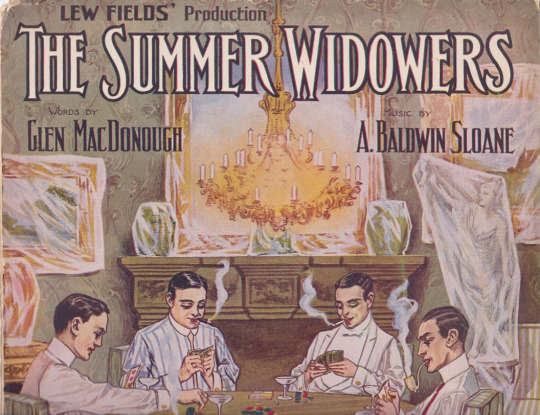
The Summer Widowers was billed as a musical panorama in seven views. The music was by A. Baldwin Sloane, words by Glen MacDonough with some songs composed by Burt Green. It was directed by Ned Wayburn with scenic design by Arthur Voegtlin and Costume Design by Melville Ellis. The production was produced by Lew Fields, who also starred as Otto Ott.
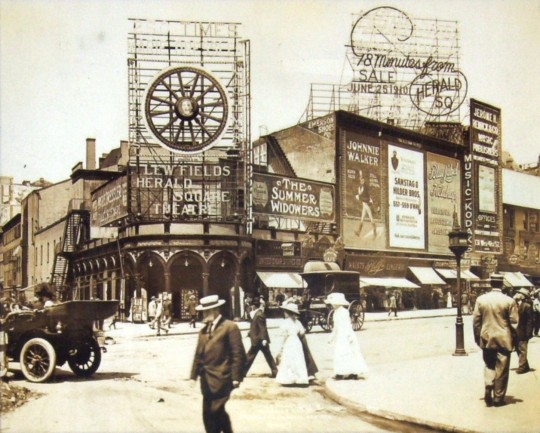
The term “summer widowers” refers to husbands left alone when their wives went on vacation without them. In 1910, one Toledo husband made headlines by bringing his wife to court to prevent her leaving him behind! There was even a novelty song about the situation, the husband of the song very happy to be a summer widower.
The setting of the musical is in and around Atlantic City, New Jersey, and New York City. The show called each of its scenes ‘panoramas’.
The Seven “Panoramas”
The Boardwalk in front of the Marlborough-Blenheim Hotel, in Atlantic City
A Street in New York
Salve di Moia's delicatessen shop and fancy grocery
Beach at Atlantic City, and a scene in the surf
Third, fourth, and fifth floors of the St. Vitus Apartments
Lobby of the Folderol Gardens
The interior of the Folderol Gardens
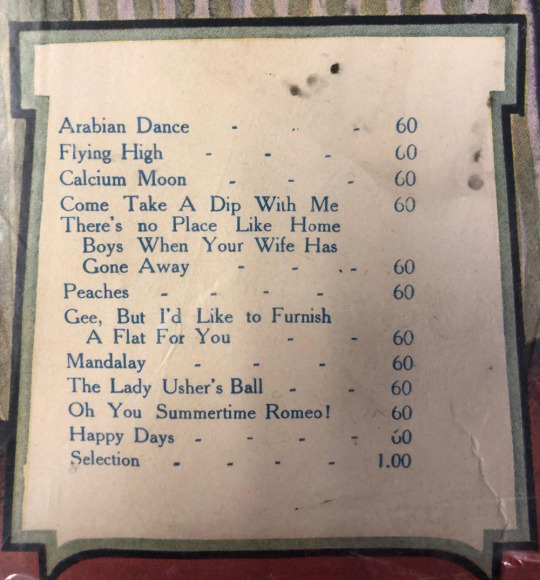
Composer Alfred Baldwin Sloane was one of the most prolific writer of musical comedies around the turn of the 20th century. Sloane wrote the scores for no fewer than two dozen Broadway musicals between 1896 and 1912. His biggest hit was “Heaven Will Protect the Working Girl” (1910), but none of his songs found lasting fame. He died in Red Bank NJ in 1925.
Lew Fields (Otto Otts) was born Moses Schoenfeld in January 1867. He was an actor, comedian, vaudeville star, theatre manager, and producer. He was part of a comedy duo with Joe Weber. He also produced shows on his own and starred in comedy films.
In addition to Fields and a cast of nearly 200 (!), the ensemble included ten year old future first lady of the American Theatre, Helen Hayes, as Psyche Finnegan.

Irene Franklin (Clarabell Clews, Otto Ott’s prospective daughter-in-law and the perfect lady detective) began her stage career at the age of six months when her parents carried her on stage in a production. She appeared on Broadway at age six. She debuted in vaudeville in 1895 and was named Most Popular Woman Vaudeville Artist in 1908. She was married to Burton Green, who was also in the cast as a pianist, and had contributed songs to the score. Franklin died at the Actors Home in Englewood New Jersey in 1941.
Vernon Castle played Oxford Tighe, American Agent for Eyzzzsst, the new Hungarian cordial. He is probably most famous for his partnership with his wife, Irene (not Franklin, but Foote). The couple met in 1910 around the same time as The Summer Widowers was gearing up. Vernon arranged an audition for her with Lew Fields, who hired her as a dancer replacement for The Summer Widowers, her first professional appearance.
In addition to Irene Castle, after opening night, Margaret (aka Daisy) Dumont joined the cast as Fritizi Fluff, an absent-minded prima donna. Dumont would later find great success as a foil for the Marx Brothers.
In addition to Oxford Tighe (Oxford tie) and detective Claribel Clews (clues), other clever character names included Captain Kodak (a photographer), Winnie Wildwaves (a diver), Salve De Mora (an aria from “Faust”), Tom Noyes (a pianist), Virginia Ham (a performer), and Sandy Beach (lifeguard).
Vernon Castle opened the show singing “I Never Know How to Behave when I’m with Girls, Girls, Girls,” surrounded, of course, by a tantalizing bevy of girls, girls, girls. That song was not by A. Baldwin Sloane, but by Harry Carroll. Carroll was born in Rosenhayn, New Jersey in 1892 and began his career playing piano in movie houses on the Boardwalk in Atlantic City while still in his teens.
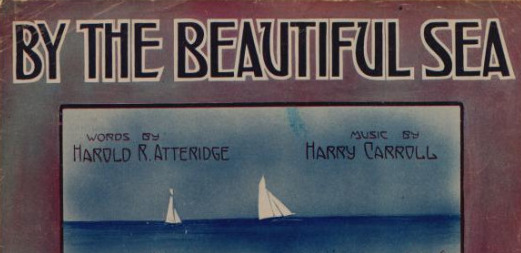
In 1914, Carroll wrote “By the Beautiful Sea” while in Brighton Beach NY, but it might easily have been inspired by his days in Atlantic City.

"Summer Widowers" Very Busy
"Summer Widowers" sets a fast pacemaker for itself in its title. The first setting is a section of the Boardwalk in Atlantic City in front of a mammoth hotel, with visitors and wheel-chairs (1). One of those vehicles has elliptical wheels to bounce and tumble the rider.
(1) Wheel-chairs are not to be confused with mobility devices of disabled people, but Atlantic City’s famous rolling chairs of the Boardwalk.

The spectacular set design also featured:
a moon that winked and cried
airplanes that flew out over the audience’s heads,
a three story building that features 9 apartments occupied by 100 people
a working elevator
a temperamental Murphy bed
tap shoes that emit sparks
animated cheese on a deli counter
sausage links that turn into a pet dog
The final spectacle is back at Atlantic City, on the beach alongside one of the big piers, from which bathers dive into what looks exactly like a real surf.
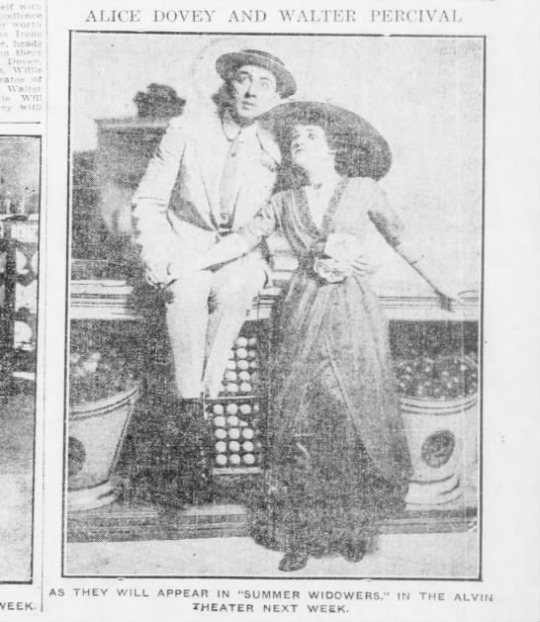
The Summer Widows premiered out-of-town at New Haven’s Hyperion Theatre on May 26, 1910. It moved on to play the Broadway Theatre, New York City, where it ran for 140 performances before launching a tour (above photo) with some cast changes.

ATLANTIC CITY

The shear size of The Summer Widowers likely cut down on the show’s options for out-of-town tryouts. However, in June 1909, a year before The Summer Widows opened, Lew Fields and Lee Shubert were asked to leave Nixon’s Apollo Theatre in Atlantic City by owner Erlanger and the producer of the show playing there, Florenz Ziegfeld. The curtain was held while police escorted Mr. and Mrs. Fields and Mr. Shubert from the premises. According to one newspaper, it caused quite a ruckus on the Boardwalk. Ziegfeld later claimed that it was in retaliation for Shubert (an associate of Fields’) doing the same to them at Shubert houses.
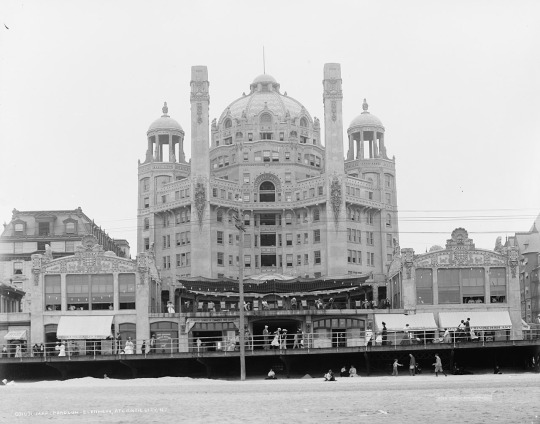
The first panorama of The Summer Widowers is set on the Boardwalk in front of the real-life Marlborough-Blenheim Hotel. It was built between 1902-1906, making it very new in 1910. "Blenheim" refers to Blenheim Palace in England, the ancestral home of Sir Winston Churchill, a grandson of the 7th Duke of Marlborough. Churchill himself visited the hotel in 1916. It has been seen in several films and television shows set in Atlantic City. It was demolished in October 1978.

The fourth panorama of The Summer Widowers is set at the Beach and in the Surf of Atlantic City. As the 1910 photo above testifies, bathing costumes for both men and women were much less abbreviated than they are today. Guide ropes kept non-swimmers from being carried away by the undertow.

#The Summer Widowers#Atlantic City#NJ#Marlborough-Bleinheim Hotel#Boardwalk#Lew Fields#1910#Broadway#Broadway Theatre#Vernon Castle#Irene Franklin#A. Baldwin Sloane#Harry Carroll#Musical#Broadway Musical#Shubert#Ziegfeld
2 notes
·
View notes
Photo


Emma Cunniffe as Queen Anne and Romola Garai as Sarah Churchill in the play, Queen Anne, showing in London this summer.
#I managed to get tickets and I'm so excited to see this#queen anne#emma cunniffe#sarah churchill#duchess of marlborough#romola garai#play#theatre#london#history#18th century
15 notes
·
View notes